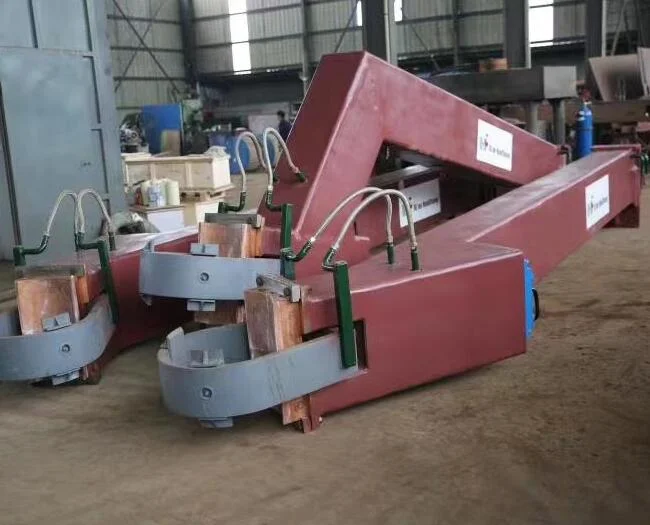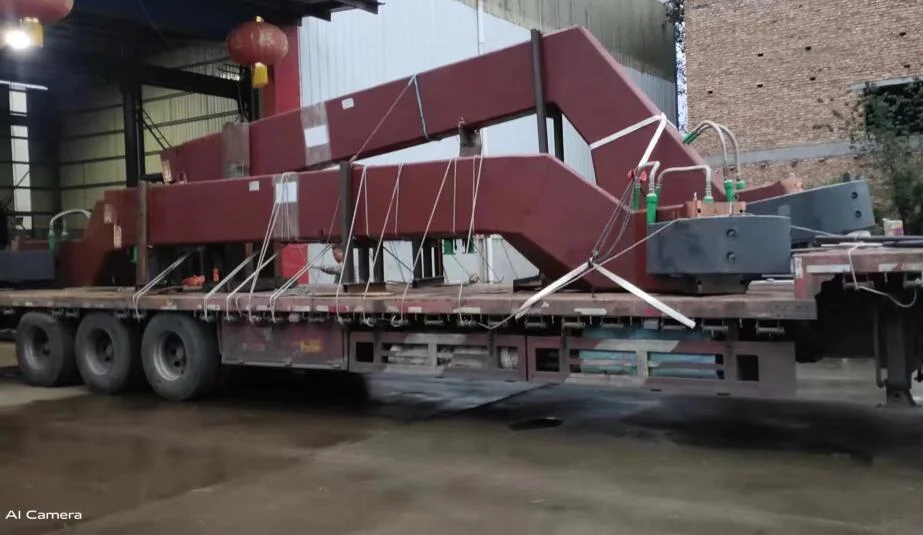- This topic is empty.
-
AuthorPosts
-
2025-09-08 at 4:45 pm #7678
Power conducting arms are critical components in many advanced manufacturing systems, especially those related to the production of lithium battery materials and other high-tech sectors. These arms are responsible for conducting power safely and reliably to moving equipment parts, ensuring seamless operations and high efficiency in industrial production environments. A malfunction or poor maintenance of power conducting arms can lead to costly downtime, reduced productivity, and even safety hazards. In this blog, we will provide an extensive troubleshooting and maintenance guide for power conducting arms, with a particular focus on their applications in lithium battery material production equipment, where companies like Timonic play a crucial role by developing and manufacturing cutting-edge solutions such as lithium battery copper foil making machines and cathode roller systems.
Understanding the Function of Power Conducting Arms
Power conducting arms are designed to transmit electrical energy between stationary and moving parts within industrial machinery. They often integrate flexible joints, conductive materials, and insulation systems to ensure uninterrupted power flow even in high-speed or heavy-duty environments. These arms are widely used in advanced equipment, such as lithium battery foil production lines, automated assembly systems, and various high-performance material handling applications.
In lithium battery manufacturing, power conducting arms contribute to key processes like copper foil making and cathode material preparation, where precise power transmission is essential to achieving uniform quality and stable production.

Common Issues with Power Conducting Arms
Like all industrial components, power conducting arms can face issues due to operational stress, environmental factors, or improper maintenance. Common problems include:
Wear and Tear of Conductive Surfaces: Repeated motion can degrade conductive surfaces, leading to resistance buildup.
Loose Connections: Vibration and operational stress may loosen fasteners or connectors.
Overheating: Excessive current or poor contact can cause local heating and damage insulation materials.
Corrosion: Exposure to moisture, chemicals, or aggressive environments can corrode conductive elements.
Insulation Breakdown: Mechanical stress or thermal aging may compromise insulation, posing safety hazards.
Troubleshooting Power Conducting Arms
Proper troubleshooting is essential for identifying and resolving problems before they escalate into major failures. Below are key steps for diagnosing common issues:
Visual Inspection
Regularly inspect the power conducting arms for visible damage, wear marks, discoloration, or signs of overheating. Look for cracks in insulation or mechanical deformities in the arm structure.
Electrical Testing
Use multimeters or advanced diagnostic equipment to measure resistance, voltage drops, and continuity across the arm's conductive elements. Any irregularities may indicate loose connections or material degradation.
Mechanical Assessment
Ensure all fasteners, hinges, and joints are properly tightened and lubricated. Misaligned arms may lead to uneven wear and energy loss.
Thermal Monitoring
Install thermal sensors or use infrared thermography to detect hotspots that may result from excessive current flow or poor electrical contact.
Operational Simulation
Run controlled tests under normal and peak operating loads to observe performance. Pay attention to unusual noises, vibrations, or delayed responses.

Maintenance Strategies for Power Conducting Arms
A proactive maintenance plan is crucial for extending the life of power conducting arms and ensuring reliable performance. Here are some essential practices:
Scheduled Cleaning
Keep the conductive surfaces and insulation parts free from dust, debris, and oxidation. Use appropriate cleaning agents that do not damage conductive materials.
Lubrication of Moving Parts
Apply compatible lubricants to hinges and joints to minimize mechanical friction and wear.
Tightening and Alignment
Regularly check the mechanical connections and adjust alignment to prevent uneven stress distribution.
Replacement of Worn Parts
Timely replace degraded conductive pads, insulation sleeves, or joints to maintain optimal performance.
Documentation and Monitoring
Maintain detailed records of inspections, repairs, and replacements. Implement monitoring systems to track operational parameters in real-time.
Importance of Professional Manufacturing in Power Conducting Arms
High-quality power conducting arms are essential for reliable performance in demanding applications like lithium battery copper foil production. Timonic, a specialized manufacturer dedicated to the research, development, and production of advanced equipment for lithium battery materials, plays a significant role in this domain.
Timonic's expertisein manufacturing lithium battery copper foil making machines and cathode rollers ensures that the power conducting arms used in their systems meet stringent performance requirements. Their focus on precision engineering, high-conductivity materials, and innovative design contributes to higher efficiency, reduced energy loss, and improved operational safety.
Why Choose Timonic?
Industry Expertise: Years of experience in lithium battery material production equipment.
High-Quality Materials: Use of advanced conductive alloys and robust insulation systems.
Cutting-Edge Technology: Integration of intelligent monitoring and energy-efficient systems.
Customization Options: Tailored designs to meet specific production requirements.
Comprehensive Support: From installation to after-sales service, Timonic provides full technical support.

Enhancing Reliability Through Design and Technology
Modern power conducting arms benefit from advancements in design and materials. Some notable innovations include:
High-Conductivity Copper Alloys: Reduce resistance and heat buildup.
Flexible Composite Structures: Allow for higher movement range without mechanical stress.
Smart Monitoring Systems: Provide real-time feedback on current flow, temperature, and wear status.
Improved Insulation Materials: Enhance safety and extend service life.
Timonic continuously invests in research and development to integrate such innovations into its equipment, supporting the fast-evolving lithium battery industry.
Impact on Lithium Battery Manufacturing
In the context of lithium battery manufacturing, reliable power conducting arms help:
Ensure Uniform Copper Foil Quality: Consistent power transmission leads to stable production parameters.
Reduce Downtime: Properly maintained arms minimize unexpected halts in production.
Enhance Energy Efficiency: Lower resistance and optimized contact reduce energy loss.
Improve Safety: High-quality insulation and stable operation mitigate risks of short circuits or overheating.

Conclusion
Power conducting arms are vital to the smooth operation of many industrial systems, particularly in the fast-growing field of lithium battery production. Ensuring their optimal performance through proper troubleshooting and maintenance is essential to achieving consistent product quality, minimizing downtime, and enhancing operational efficiency.
By partnering with experienced manufacturers such as Timonic, which specializes in advanced equipment like lithium battery copper foil making machines and cathode rollers, companies can secure high-quality power conducting solutions that meet the rigorous demands of modern manufacturing. A strategic focus on maintenance, innovation, and continuous improvement will pave the way for more efficient, reliable, and sustainable production in the years to come.
http://www.timonic.com.cn
Timonic -
AuthorPosts
- You must be logged in to reply to this topic.